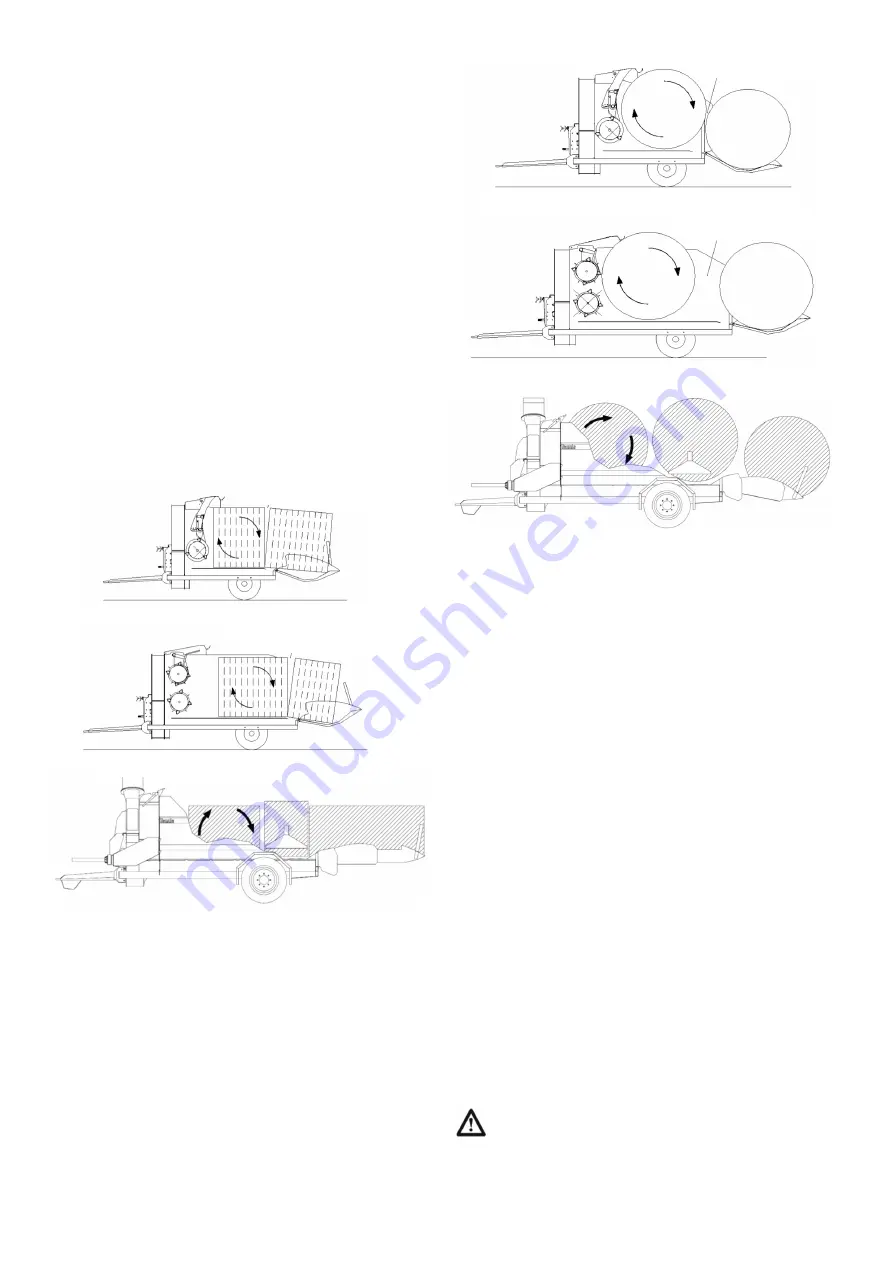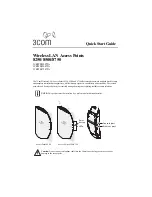
11.8 Discharging Square Bales
Gradually increase bed chain speed by means of the
speed control until shredding commences. It is then
advisable to increase bed chain speed to a point at which
the slices of the bale being shredded are forced up and
over the material coming forward. This rotational motion
is represented in Figure 6.
Where a bale lift is fitted to a Tomahawk 1010, release
the portion of the bale retained by the bale lift only when
the first portion has been discharged which is usually
indicated by a large fall in discharge rate.
Once the material in the bale chamber has been
discharged the tailgate can be lifted to allow a portion of
rear half of the bale to be loaded into the chamber thus
allowing room for the material in the bale chamber to
rotate.
With a Tomahawk 1010 it will be found advantageous to
only allow half of the second bale to enter the chamber at
a time thus allowing room for each half to rotate.
Typically the rate of discharge may be controlled by bed
chain speed but only once rotation of the material within
the body of the machine has been achieved.
Figure 6. Rotation of square bales
11.8 Discharging Round Bales
Gradually increase bed chain speed by means of the
speed control until discharge commences. Good
performance will only be achieved by getting the bale to
rotate within the chamber as shown in Figure 7.
Increasing the speed of the bed chain will increase the
rate of discharge until a maximum rate is achieved. If the
bed chain speed is too great, material will unroll from the
bale at a rate greater than can be discharged. This will be
indicated by a build up of material above the crossbeater
bale restraint.
Figure 7. Rotation of round bales
11.9 Discharging Clamp Silage
Increase bed chain speed until the desired discharge rate
is achieved. Once the forward portion of the load has
been discharged, the tailgate can be lifted to ensure a
continuous feed rate.
11.10 General Discharging Instructions
If a large amount of loose material builds up above the
bale restraint it may be necessary to reverse the bed
chain until the loose material falls down behind the
crossbeater(s) before recommencing discharge.
When it is necessary to stop shredding part way through a
bale, always stop the bed chain rotation and put it in
reverse for a few seconds before stopping the rotor and
crossbeater(s). This allows the material in the area
around the crossbeater(s) and rotor to be blown clear of
the machine. Failure to do this may result in a blockage
when the machine is re
-
started.
The length of chop, evenness of feed and power
consumption will vary with the condition of the bale. In
general, baled silage and damp or caked straw materials
will require a higher power input than dry brittle materials.
Should the rotor or crossbeater(s) become blocked,
indicated by either slipping of the PTO clutch or failure of
the crossbeater(s) shear bolt, it may be necessary to turn
the rotor backwards. This may be achieved by levering
the rotor paddles with a post through the outlet chute.
Further access may be gained by removing the blockage
panels from the front of the upper and lower rotor
housing.
CAUTION.
DUAL CHOP: Always fully raise the
blade carrier and lock it in position with pins before
attempting to remove blocked material from the
crossbeater.
20
1010 models
7100, 7150, 8100, 8150, 8500 & 8555 models
9500 models
Gap between bales
Gap between bales
7100, 7150, 8100, 8150, 8500 & 8555 models
9500 models
Gap between front and rear
1010 models
Gap between front and rear
Summary of Contents for Tomahawk 7100
Page 1: ...30417 10100 11 19 30970 10345 31725 11338 10056 3694 TMKBXOP1119A...
Page 38: ...NOTES 35...
Page 39: ...36 NOTES...
Page 40: ......
















































